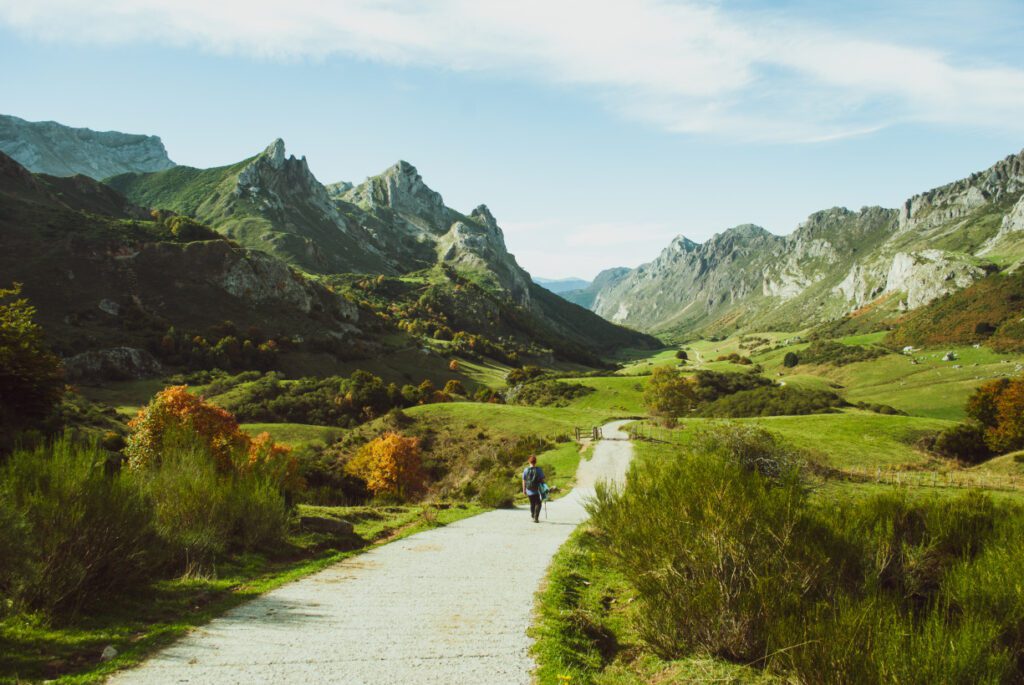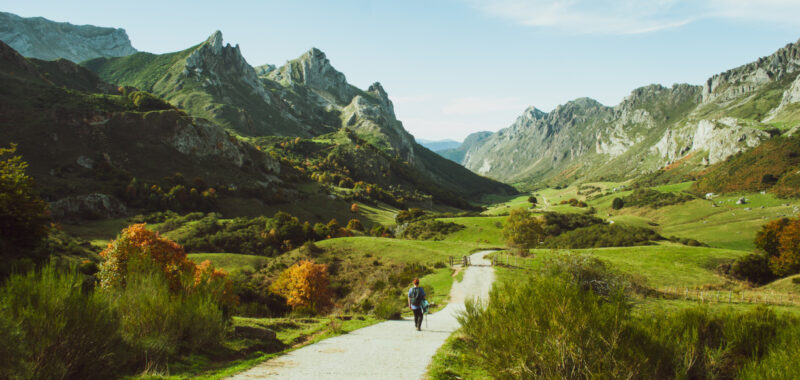
This sponsored content was created in collaboration with a Skift partner.
Spain consistently ranks as one of the most popular tourist destinations globally. Eighty-five million international tourists visited the country in 2023, and in the first half of 2024, Spain drew 13 percent more visitors than in the same period the year before. Year after year of record-breaking tourism has put Spain at the vanguard of sustainable travel initiatives.
Led by the Spanish national tourism organization, Turespaña, the country is taking a proactive approach to balancing the excitement of growth with the effects of overtourism. Sustainably managing tourismâs impact on local communities and the environment will ensure Spain can be enjoyed for many generations to come. And the nationâs sprawling natural bounty means there are many treasures to preserve and protect.
For example, 55 percent of Spain is covered by forest, making it one of the most forested nations in Europe. The European Charter for Sustainable Tourism recognizes 29 distinct natural ecosystems covering one-third of the country. Each year, 15 million tourists visit Spainâs 291 natural parks, 15 geoparks, 16 national parks, and 53 UNESCO Biosphere Reserves and European Destinations of Excellence (EDEN). Spain has also earned 638 Blue Flags, the highest number in the world for a country. Costa del Sol, Spainâs top tourist destination, was one of the first European regions to offer tourists a tool to measure and offset their carbon footprint.
At the national level, Spain has taken great pains to promote sustainable mobility and energy efficiency. Its high-speed rail network is the most extensive in Europe and the second largest in the world, covering approximately 2,469 miles (3,973 kilometers). More than half of the energy it generates is renewable. Spain has achieved a recycling rate of nearly 77 percent (exceeding average rates in the European Union), and 90 percent of Spanish companies are in action toward achieving the United Nationsâ Sustainable Development Goals.
These are just some of the ways the Spanish government balances the urgency of environmental conservation with the demands â and benefits â of a tourism boom. At the same time, individual Spanish territories are also designing targeted efforts to address the unique sustainability concerns present in each region. Lanzarote, Valencia, Green Spain, and Mallorca are exemplary destinations getting proactive about environmental and social sustainability in light of their soaring popularity. Each region has implemented infrastructure changes, environmental policies, and visitor experiences created exclusively to build a sustainable future for Spainâs tourism industry.
Natural and Cultural Preservation On The Island Of Lanzarote
Lanzarote has been a sustainable tourism trailblazer for decades. Over 30 years ago, the region received a UNESCO Biosphere Reserve designation. In 2015, Lanzarote was declared a UNESCO Global Geopark and became the first destination to receive a Biosphere certification from the Responsible Tourism Institute. Continuing in that tradition today, Lanzarote has dedicated 2024 to balancing tourism growth with the preservation of the regionâs natural environment.
Lanzaroteâs stunning beaches, volcanic landscape, and year-round warm weather have also long inspired its cultural traditions. Art, architecture, and gastronomy are just a few examples of the local culture guests can experience when visiting. In that sense, protecting local ecosystems also preserves the islandâs culture.
For example, La Geria, a system of conical hollows built into layers of naturally occurring volcanic ash, encourages wine production in the region by sheltering vines from the wind. Visitors can tour the vineyard and the caves beneath and end the day tasting local wines a stoneâs throw from where they were grown. Similarly, a visit to the César Manrique Foundation provides a glimpse into the life of one of the islandâs most famed artists; Volcano House, where Manrique lived, showcases traditional island architectural practices staged around volcanic rock formed in the 1700s.
Valencia Named The European Green Capital Of 2024
The region of Valencia is rebuilding after the recent flash floods that devastated some areas near the city of Valencia. This incident highlights the urgent need for sustainable urban planning and stronger climate resilience measures to protect Valenciaâs residents and visitors from future risks.
Aware of this need, and thanks to years of dedicated effort, Valencia was recently named European Green Capital 2024 in recognition of the regionâs strides in sustainable urban development and carbon neutrality. The regionâs sustainable travel guides encourage visitors to use public transportation, respect recycling programs, look out for the local loggerhead turtle population, and more.Â
Four distinct green routes usher visitors through Valenciaâs lush natural landscapes and city hotspots on foot or by bike, surrounded by panoramic views and cultural spots at every turn. Visitors might make their way to Turia Gardens, which are uniquely situated in the old river bed. Interestingly, the diversion of the Turia River saved Valencia city from the flood.Â
By preserving these natural areas and honoring the communities that have called them home for centuries, Valencia supports local economies while offering visitors the authentic experiences they seek. Valencia also encourages tourists to give back while visiting by volunteering with local initiatives to prevent forest fires, preserve marine ecosystems, and participate in beach cleanups.
When itâs time for a break, the regionâs markets, restaurants, and bars prioritize local and seasonal ingredients. By reducing the carbon footprint of food production, these practices have earned Valencia a Globally Important Agricultural Heritage Systems (GIAHS) designation from the United Nations. By preserving these natural landscapes and honoring the communities that have called them home for centuries, Valencia secures its ability to offer visitors the authentic experiences they seek now and in the future.Â
Green Spain Aspires To Be Europeâs Largest Ecotourism Corridor
Green Spain is a northern region spanning 53,000 square kilometers and four distinct regions: Asturias, Cantabria, Galicia, and Euskadi. The vast area is becoming known as the largest ecotourism corridor in Europe, where visitors can explore national parks like Picos de Europa and the Atlantic Islands of Galicia, tour UNESCO Biosphere Reserves like Mariñas Coruñesas e Tierras do Mandeo and Somiedo Reserve, and visit natural wonders like Santoña Marhes Natural Park, Liencres Dunes Natural Park, Devesa da Rogueira, and Bosque dos Grobos.
After immersing themselves in nature and glimpsing local wildlife habitats, visitors to Green Spain can delight their senses thanks to the regionâs vast network of cheese and wine producers. More than 50 traditional restaurants spread across Green Spain offer zero-kilometer gastronomical experiences, centering ingredients grown and made in the immediate area. When itâs time to rest, visitors can experience local lifestyles first-hand by choosing to stay with any of the regionâs 170 small rural accommodation options.
The Mallorca Pledge Models The Future Of Responsible Tourism
Mallorcaâs unique combination of historical palaces, cathedrals, cultural traditions, stunning beaches, and world-class nightlife have made it a popular destination. At the same time, the island has also become one of the most prominent voices in the global conversation about overtourism. The Mallorca Pledge aims to respond to the trend and transform the island into a leading sustainable destination at the forefront of the responsible tourism movement.
The U.N. Tourism Board, local tourism board, and most of Mallorcaâs 53 municipalities have all signed the pledge, along with airlines, tour operators, and online travel agencies. But in addition to institutional sustainability efforts, the pledge also invites tourists to sign on as individuals. Visitors are encouraged to take basic actions like reducing waste and conserving water, but many of the pledgeâs recommendations also inspire more authentic, exciting trips to Mallorca. Choosing green transportation options might mean biking breathtaking coastlines, for example, taking in the stunning sights while experiencing the islandâs natural riches from a safe distance that preserves their beauty for future generations.
To learn more about Spain Tourismâs sustainability efforts, click here.
This content was created collaboratively by Turespaña and Skiftâs branded content studio, SkiftX.

